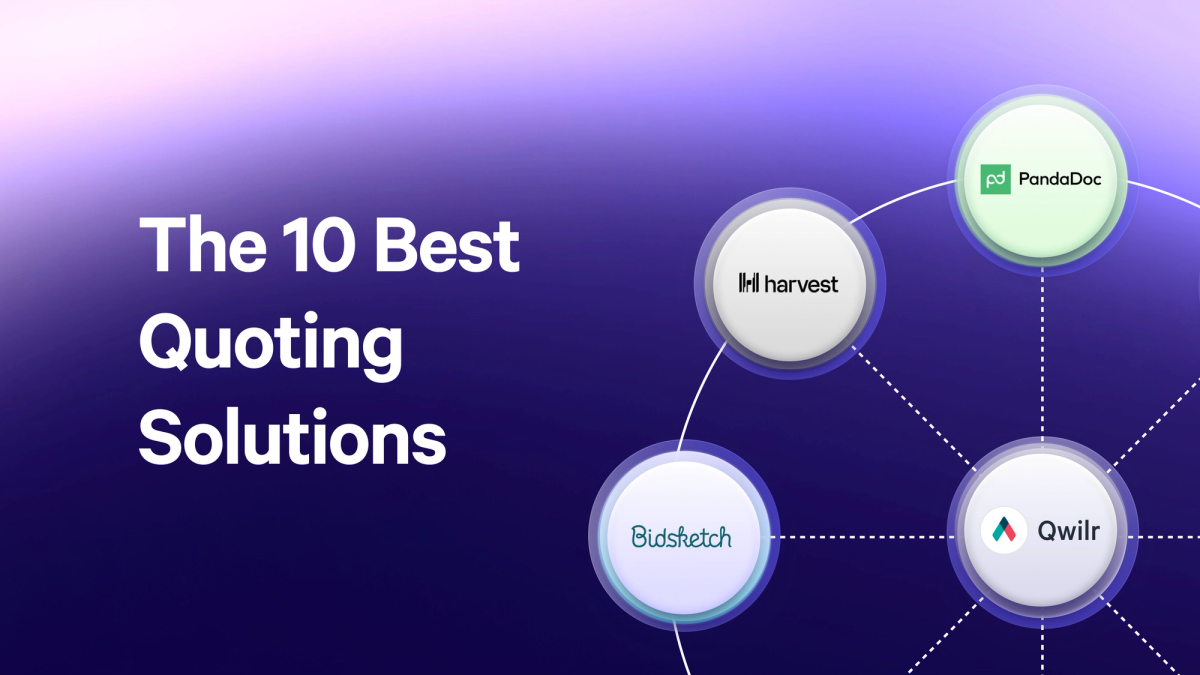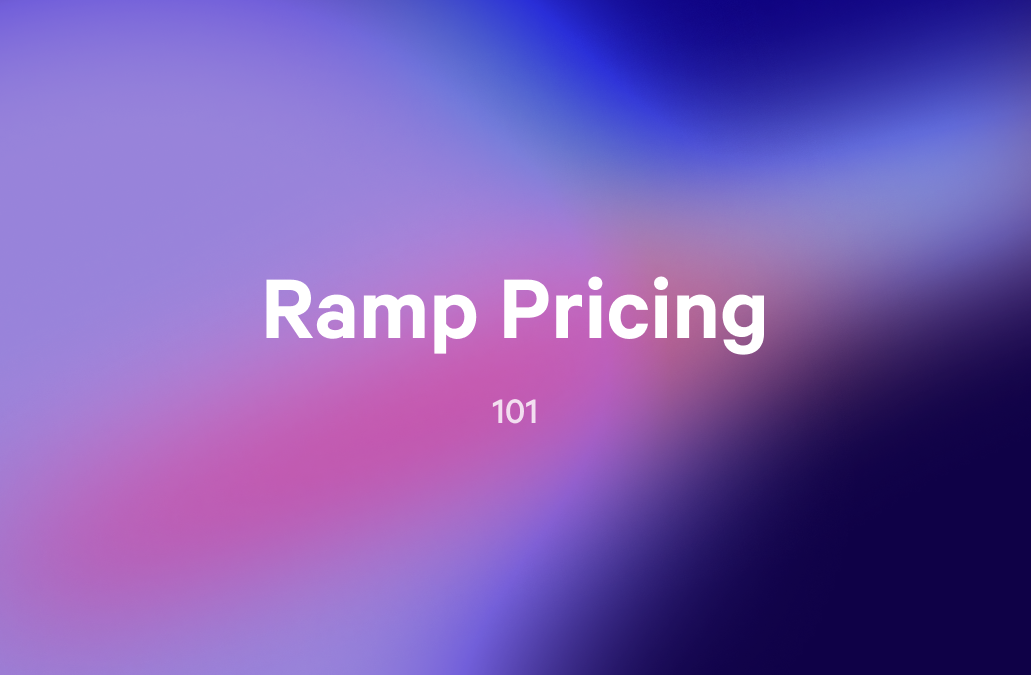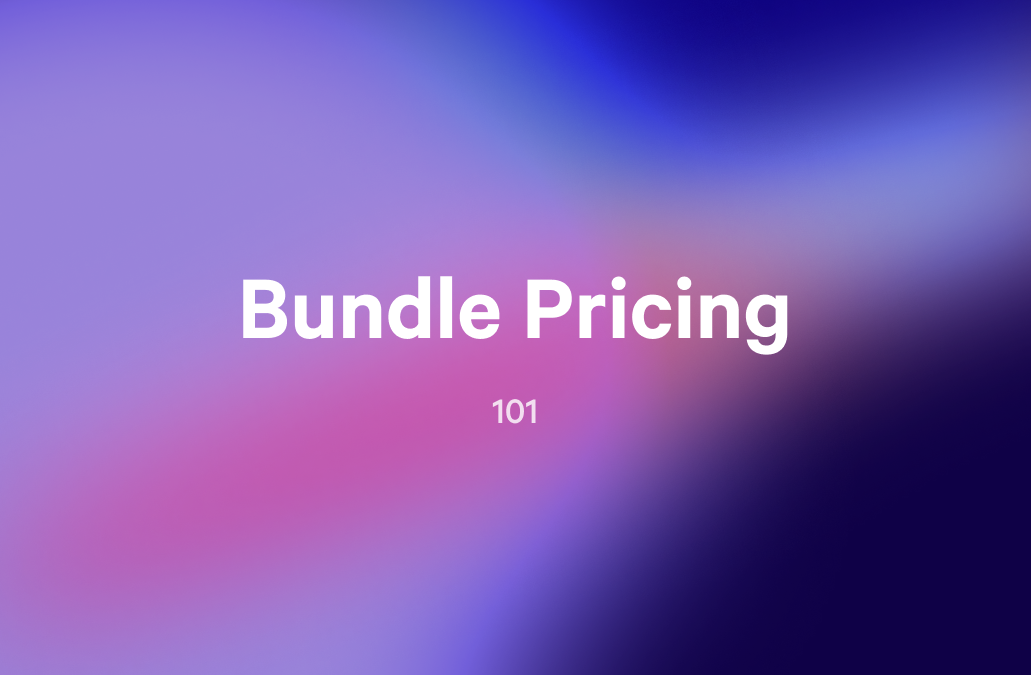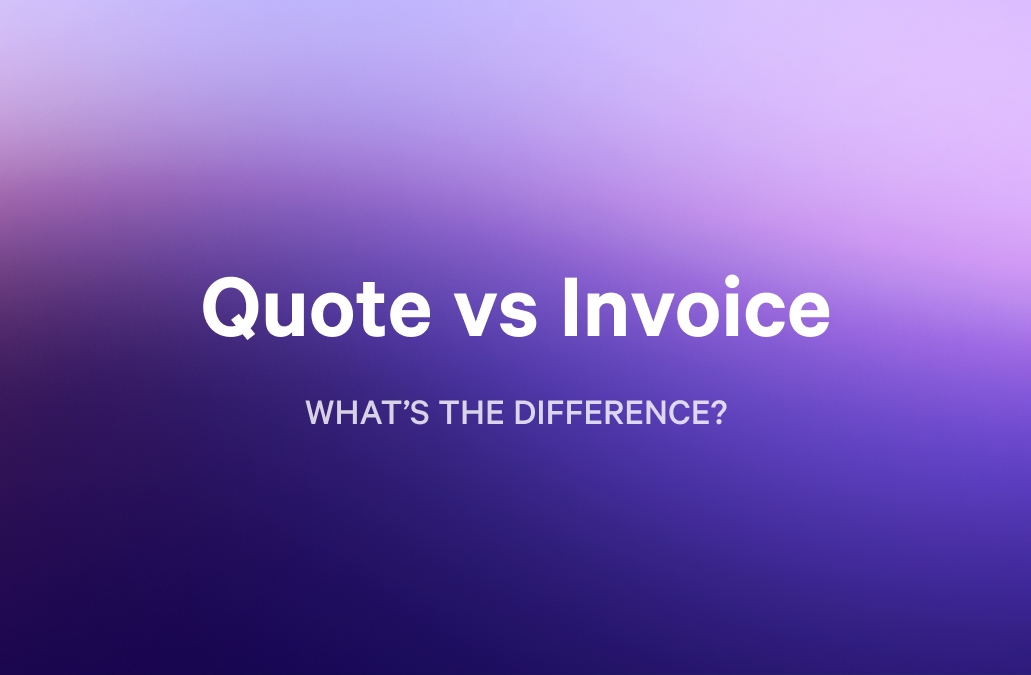Here’s an interesting truth: Many businesses treat formal quotes as an afterthought. When, actually, they are your foot in the door. A hastily written quote, riddled with ambiguity or lacking key details, can sink a deal before it even sets sail. On the flip side, a well-crafted formal quote signals professionalism, trust, and competence, setting the tone for the entire customer relationship.
The handshake before the handshake, let’s unpack everything you need to know about formal quotes: what they are, how to write one, what to include, and how to avoid the common pitfalls that trip up even seasoned professionals.
Key takeaways
- Formal quotes are critical sales tools, not paperwork. A well-crafted quote builds trust, sets expectations, and reflects your professionalism, helping you stand out and win deals.
- Quotes are legally binding documents. Unlike estimates, formal quotes must be accurate, clear, and complete, as they become enforceable contracts once accepted.
- Structure and clarity matter. Every quote should include key elements like itemized pricing, payment terms, validity period, and conditions to avoid confusion, disputes, and delays.
- Modern quoting tools offer a competitive edge. Digital quotes (e.g., Qwilr) enable real-time interaction, instant approvals, mobile optimization, and analytics, making the buying process faster and more impressive.
What is a formal quote?
A formal quote (or quotation) is a structured, written proposal that outlines the price and terms for goods or services you offer. It's usually provided in response to a client’s request and typically includes key information like: A breakdown of pricing, a description of the products or services, terms and conditions, validity period, payment terms and contact information.
Unlike an estimate (which can be informal and approximate) a formal quote is legally binding once accepted. It’s essentially your offer to enter into a contract.
This legal weight makes accuracy, transparency, and clarity non-negotiable.
When do you use a formal quote?
Formal quotes are typically used in B2B (business-to-business) and high-value B2C (business-to-consumer) transactions where clarity, accountability, and professionalism are essential.
Common scenarios include a marketing agency quoting on a campaign, a builder responding to a tender, a software company pricing an annual license, an IT consultant scoping a digital transformation project, or a supplier replying to a purchase order inquiry.
In each case, the formal quote plays a critical role in setting expectations, outlining the scope and costs, and providing a foundation for mutual agreement before work begins.
Why formal quotes matter
A formal quote is your first real chance to show how you operate, and whether you're worth the investment:
1. They establish credibility
Hmmm, this seems trustworthy and plausible. (These are the thoughts you want the client to have.)
A quote is a microcosm of your business. Is it organized? Polished? Detailed? Then clients will assume your work will be too. On the flip side, a quote full of typos, missing terms, or confusing pricing raises red flags. It suggests that project execution will be similarly careless. A great quote signals a great business.
Example:Imagine receiving two quotes for a $50,000 website project. One is a vague three-line email with a single lump-sum price. The other is a structured, branded document with clear milestones, payment terms, and a personalized note. Which one are you more likely to trust?
2. They set expectations
Quotes are a pre-contractual foundation. They define what is included, what is excluded, and what the client can expect in terms of delivery, timelines, and support. This clarity helps prevent misalignment later.
Case in point: A designer who doesn’t specify “3 rounds of revisions included” in the quote might later find herself doing unlimited edits—for free. A formal quote sets those boundaries early.
3. They reduce legal and financial risk
Phew, we’re safe.
Since a formal quote can become binding once accepted, it protects both parties. When done right, it prevents scope creep, disputes, and unpaid invoices. It creates a record of mutual agreement.
Legal departments love formal quotes for a reason: they codify business terms in black and white. And for smaller businesses or freelancers without legal counsel, a detailed quote can serve as a de facto contract.
Read next: Amendments versus Addendums: Understanding Contract Fine Print
4. They create a smoother sales process
A good quote removes friction from the buying process. If a prospect has to go back and forth multiple times to clarify pricing, terms, or inclusions, you're adding unnecessary hurdles. Conversely, a clear, professional quote accelerates decision-making.
Tip: Use quoting tools that offer e-signature functionality so clients can approve instantly. No printing, signing, scanning, or delays!
5. They can differentiate you
Price isn't everything. In many industries, providers are often neck-and-neck on pricing. What tips the scales is perceived value, and that’s where the quote shines.
Your quote can demonstrate:
- That you’ve thought through the client’s needs
- That you’ve tailored your offer
- That you bring a level of professionalism that your competitors don’t
In short: Your quote can win the deal—even if your price isn’t the lowest.
Key elements of a formal quote
The core building blocks of a formal quote. A strong quote isn’t just about numbers, it’s about structure, clarity, and client experience.
Here’s what your quote needs to include, and why each element matters:
1. Quote number & date
This might seem like admin fluff, but it’s essential. Assigning a unique quote number (e.g., QUO-2025-045) allows you and the client to reference it later, especially when discussing scope, billing, or delivery. The date is important too. It indicates when the quote was created and helps define its validity period.
Pro Tip: Use sequential or client-specific identifiers to stay organized, e.g., QUO-MKTG-0425-XYZCorp.
2. Client Information
Include the recipient’s:
- Full name
- Title
- Company name
- Contact details
- Business address (especially for legal and tax purposes)
This isn’t just for courtesy. Formal documentation should show precisely who the quote is for to avoid any disputes or confusion later. This is especially important in regulated industries or procurement-heavy verticals like government, healthcare, or finance.
3. Your company details
Include your:
- Company name and logo
- Registered address
- Contact details (email, phone, website)
- Business registration number or tax ID (if applicable)
Simply, clients should be able to verify who they’re dealing with at a glance.
4. Line-item breakdown of products or services
This is the meat of the quote. Each item or service should have:
- A brief description
- The quantity (if applicable)
- The unit cost
- A subtotal
For service businesses, this might be hours of work. For product businesses, it could be SKUs or parts. The key is to break things down clearly enough that a client can understand exactly what they’re paying for without needing a phone call.
Example:
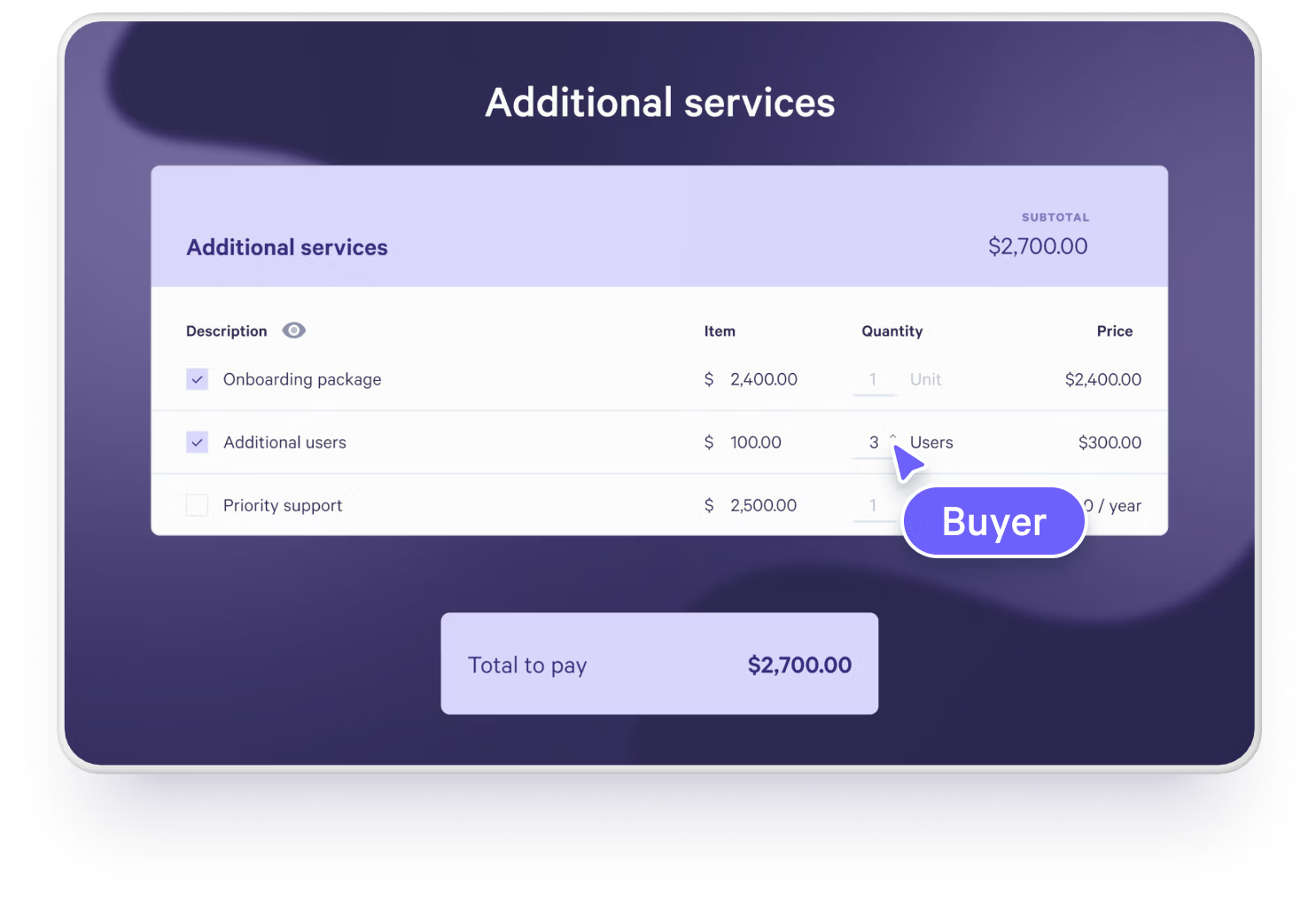
With Qwilr’s smart quote blocks, you can add recurring costs, itemized services, monthly or annual costs, and discounts.
5. Total price and tax
Include the full subtotal, applicable taxes (e.g., VAT, GST, sales tax), and the grand total. Show these as separate line items. This ensures clients understand what they’re paying and prevents disputes over tax compliance.
Example:
- Subtotal: $5,300
- VAT (15%): $795
- Total: $6,095
6. Payment terms
This section defines:
- Due date (e.g., upon receipt, Net 15, Net 30)
- Accepted payment methods (bank transfer, credit card, PayPal, etc.)
- Late payment policies (e.g., “Late payments subject to 2% monthly interest”)
Clear payment terms help you get paid on time and avoid awkward collections conversations later.
7. Validity period
Prices fluctuate. Scope changes. That’s why every quote should have an expiration date. Standard validity ranges from 14 to 30 days, depending on the industry.
Example:
“This quote is valid until June 30, 2025. After this date, pricing and availability may be subject to change.”
This protects your margins and prevents stale quotes from resurfacing unexpectedly.
8. Terms and conditions
This section handles the fine print, and it’s more important than many people realize. Your terms and conditions can include:
- Intellectual property clauses
- Cancellation/refund policies
- Ownership of work or deliverables
- Dispute resolution procedures
- Force majeure clauses (especially post-COVID)
- Warranties or guarantees
If you don’t include T&Cs in your quote, you may be forced to rely on verbal agreements… or worse, default legal interpretations.
Tip: If you're not ready to include full terms, link to a web page or attach a separate document.
9. Approval or signature field
Make it as easy as possible for the client to say “yes.” Include a digital signature field, approval button, or short instructions.
If you’re using quoting software, set up e-signature integration. If you’re sending PDFs, include a signature box and date line. (Although, why are you still sending PDFs?)
Some platforms also allow checkbox-style approvals:
This ensures there’s a formal acceptance record and minimizes the risk of scope disputes.

How to write a winning formal quote
Writing a formal quote isn’t just about inserting numbers into a template. It’s about showing that you understand the client’s needs and that you’re the right partner for the job.
Here’s a step-by-step guide:
Step 1: Understand the client’s needs
Before you quote, be clear on the scope. Have they shared a brief? Do you understand their budget, timeline, and success metrics?
If anything is unclear, ask questions. Better to clarify now than revise later.
Step 2: Customize your quote
Avoid generic, one-size-fits-all quotes. Tailor each quote to the client’s situation. Mention their company name, refer to the brief, and explain how your offering fits.
Step 3: Use clear, client-friendly language
Don’t write like a lawyer (unless you are one). Use plain English, short sentences, and bullet points to improve readability.
Example:
“Design and develop a 5-page marketing website, including mobile responsiveness and basic SEO setup.”
Not:
“Provision of digital design and front-end/back-end website development services per Article 5 of Agreement.”
Step 4: Present it professionally
Whether you’re using a branded PDF, a quoting tool like Qwilr, or email, presentation matters. Use headings, spacing, and design to guide the eye and emphasize key points.
Find a tool that supports quote automation so that your quotes are always error-free, on-brand and professional.
Step 5: Follow up
Don’t just hit “Send” and hope. Follow up with a short email:
“Hi [Client], Just checking that the quote landed safely in your inbox. Let me know if you have any questions—I’m happy to walk you through it.”
Common mistakes to avoid
Many quotes fail not because the price was too high, but because they were sloppy, confusing, or incomplete. Avoid these pitfalls:
- Vague descriptions: “Consulting services – $5,000” is not helpful. Be specific about deliverables, outcomes, and timelines.
- Typos and errors: Errors erode credibility. Always proofread before sending. Better yet, have someone else review it.
- Hidden costs: Don’t surprise clients with fees that weren’t in the quote. Be transparent from the outset.
- Forgetting terms: Payment terms, timelines, and exclusions are your legal safety net. Don’t leave them out.
- Not including a validity date: Quotes without an expiration can come back to haunt you six months later, when prices or availability have changed.
Digital vs. traditional quotes
Formal quotes used to mean paper documents, mailed or hand-delivered. But in the digital age, the format matters just as much as the content. (This is in case you’re still stuck in the stone age… see major highlights of digital quotes below!)
| Traditional Quotes | Web-Based Quotes with Qwilr |
|---|---|
Word or Excel templates | Web-based, mobile-friendly quotes |
Manual errors | Automated quote generation straight from your CRM |
PDFs on company letterhead | Real-time editing and analytics |
Printed copies | Interactive pricing tables |
Static and non-interactive | Integrated accept/sign buttons |
No tracking or live updates | Trackable, with instant notifications and updates |
Often slower to produce and update | Faster turnaround with collaborative editing |
Risk of miscommunication due to outdated versions | Always up-to-date with centralized access |
Result: Slower process, less visibility | Result: Better client experience, faster decisions, more wins |
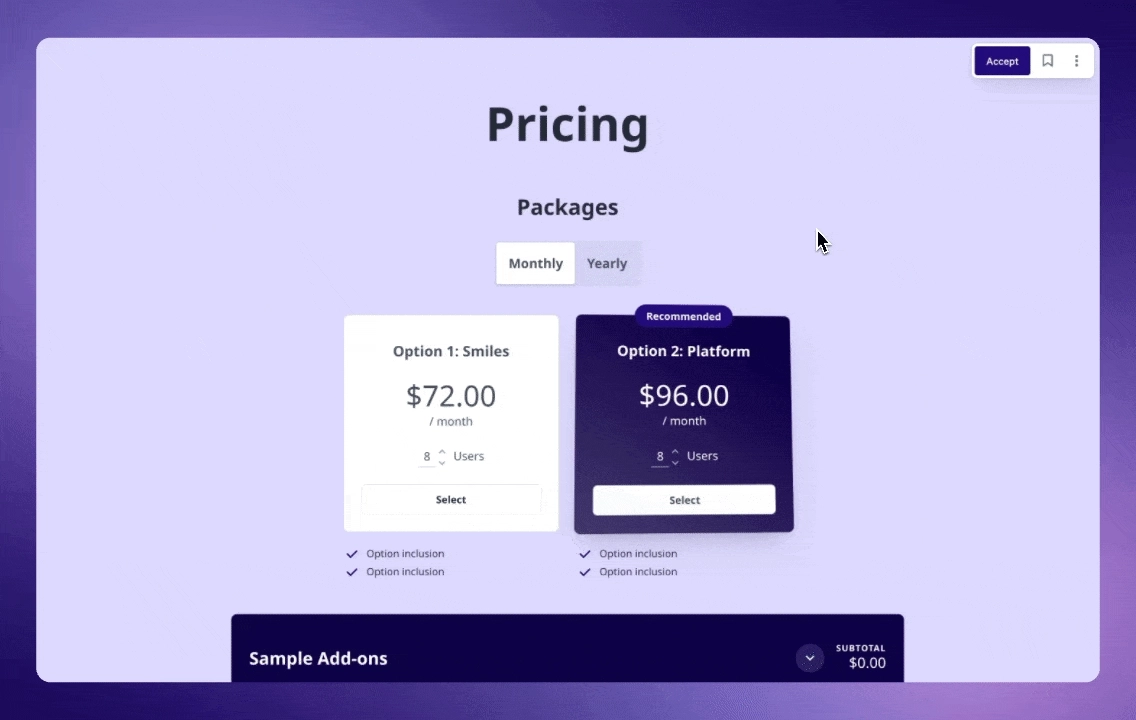
The legal angle: Is a formal quote binding?
Here’s where things get real. In most jurisdictions, a formal quote becomes legally binding once the client accepts it, usually by signing or confirming in writing. This means:
- You’re obligated to deliver what you promised
- The client is obligated to pay as agreed
That’s why it’s critical to include terms, scope, and exclusions in writing. A vague quote can lead to costly misunderstandings or legal disputes.
What Qwilr’s quote feature offers
We’ve said it many times before and we’ll say it again: Qwilr pages provide a powerful, modern solution that goes far beyond static documents.
Speed, interactivity, and conversion are what sets Qwilr apart.
- Clickable pricing tables: Clients can toggle options, adjust quantities, and watch totals update in real time (like Build-a-Bear, but for quotes)
- Fast, accurate quotes from your CRM: Populate quotes or interactive pricing plans with accurate data from your CRM. Recommend the best option and even upsell buyers with add-ons while you’re there.
- Instant approvals: E-signatures and accept buttons let buyers say “yes” without printing, scanning, or summoning a fax machine from the grave.
- Collect and manage payments easily: Collect upfront or partial payments within your Qwilr pages. QwilrPay lets you collect payments via credit card, direct debit, bank transfer/ACH.
- Mobile magic: Your quote looks stunning on any screen, from a slick desktop to that dusty old tablet your client forgot they owned.
- Embedded wow-factor: Add videos, calendars, images, and testimonials to turn a boring quote into a full-on sales experience.
- Creepy-good analytics: See who's viewed your quote, what they clicked, and how long they lingered, so you know exactly when to follow up.
- Branded brilliance: Customize fonts, colors, and logos. Save templates by team or service. Stay on-brand without lifting a finger.
- Smooth integrations: Connect to HubSpot, Salesforce, Slack, Stripe, and more. Qwilr fits right into your sales stack like it was born there.
- Quote templates to get you started: Feeling overwhelmed by the process? Use one of Qwilr’s ready-to-go templates, completely customizable—simply update it with your terms and pricing.
About the author

Dusty Martin|Revenue Operations Manager, Qwilr
Dusty is Qwilr's Revenue Operations Manager, working with a distributed sales team to drive revenue in the most efficient way possible.

